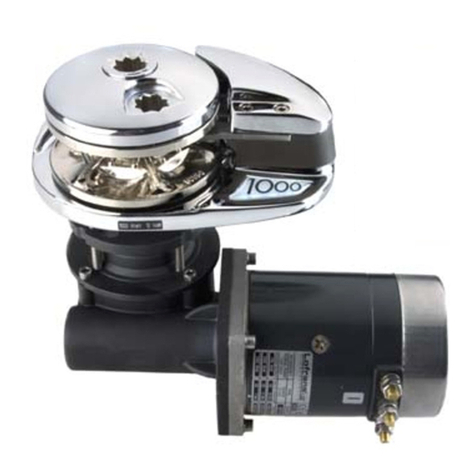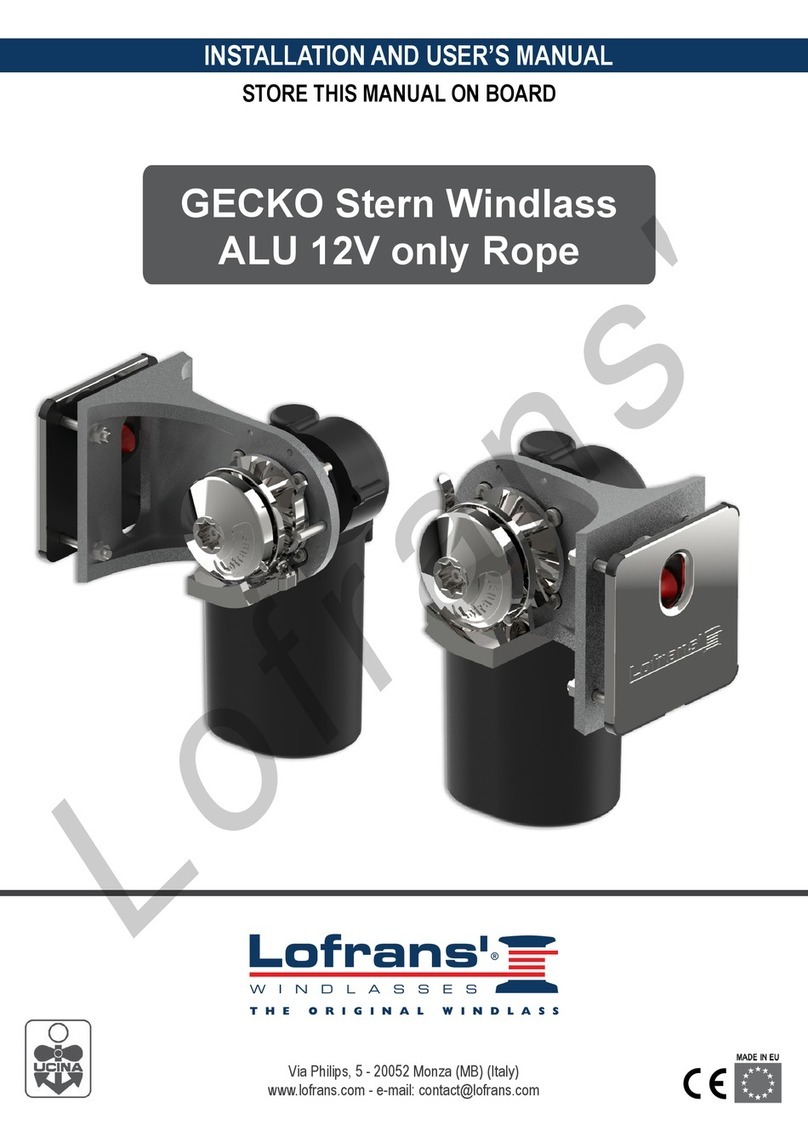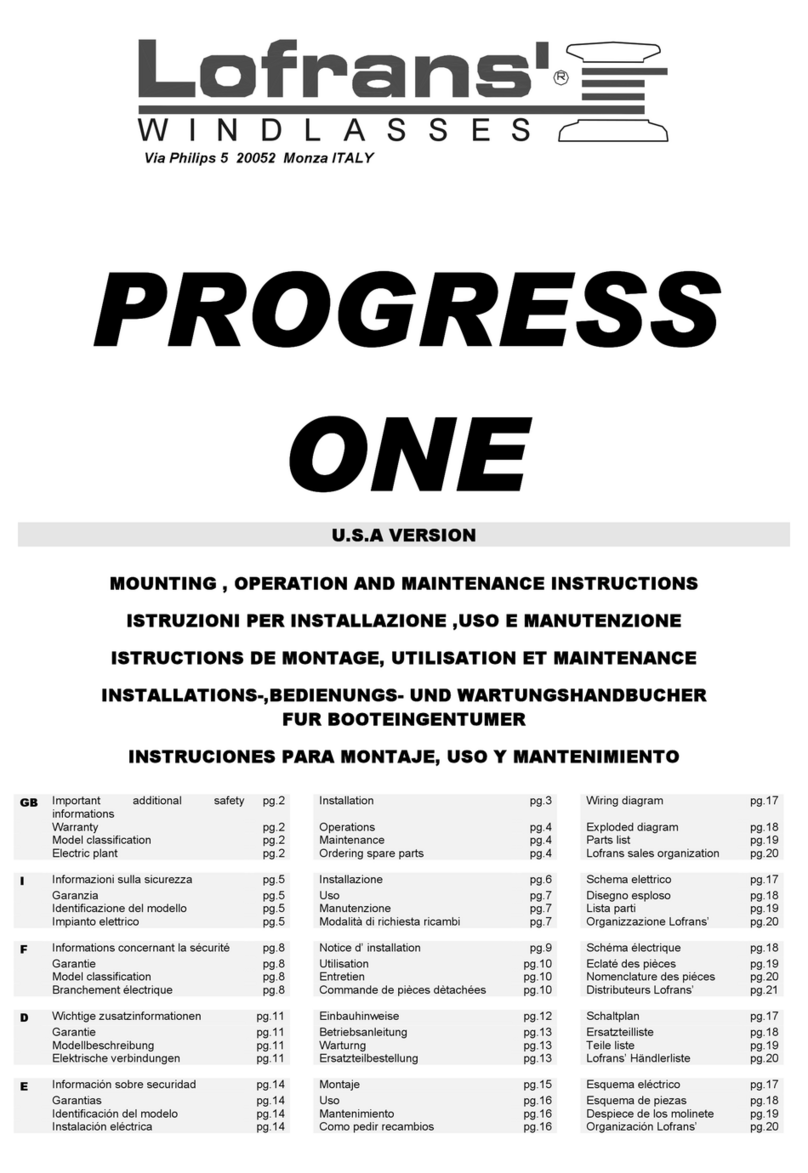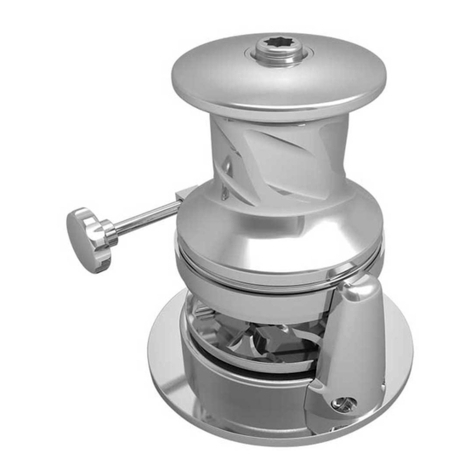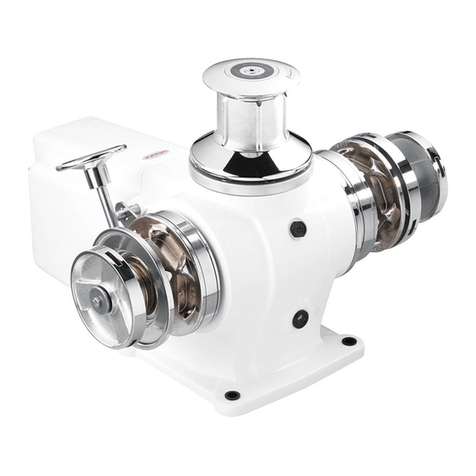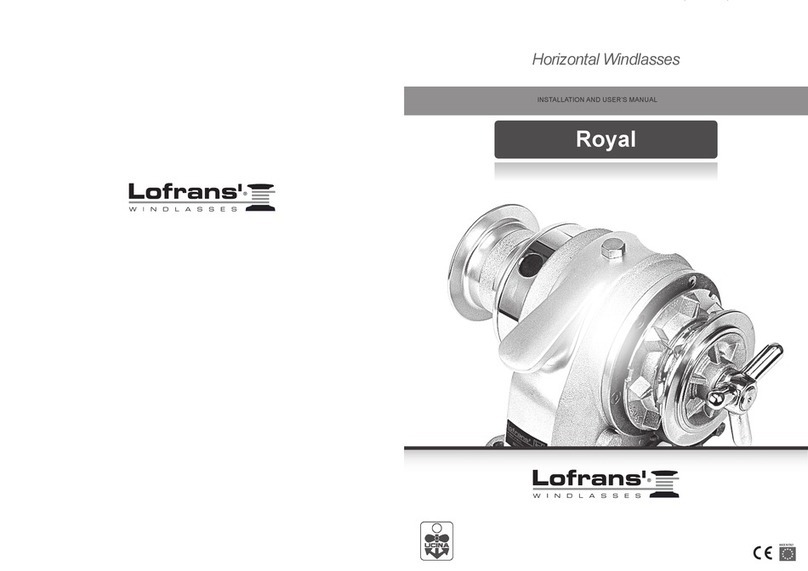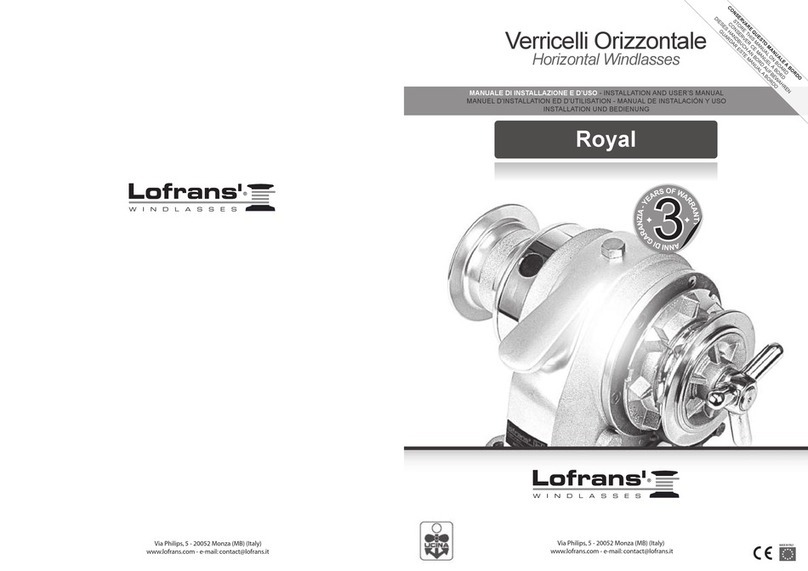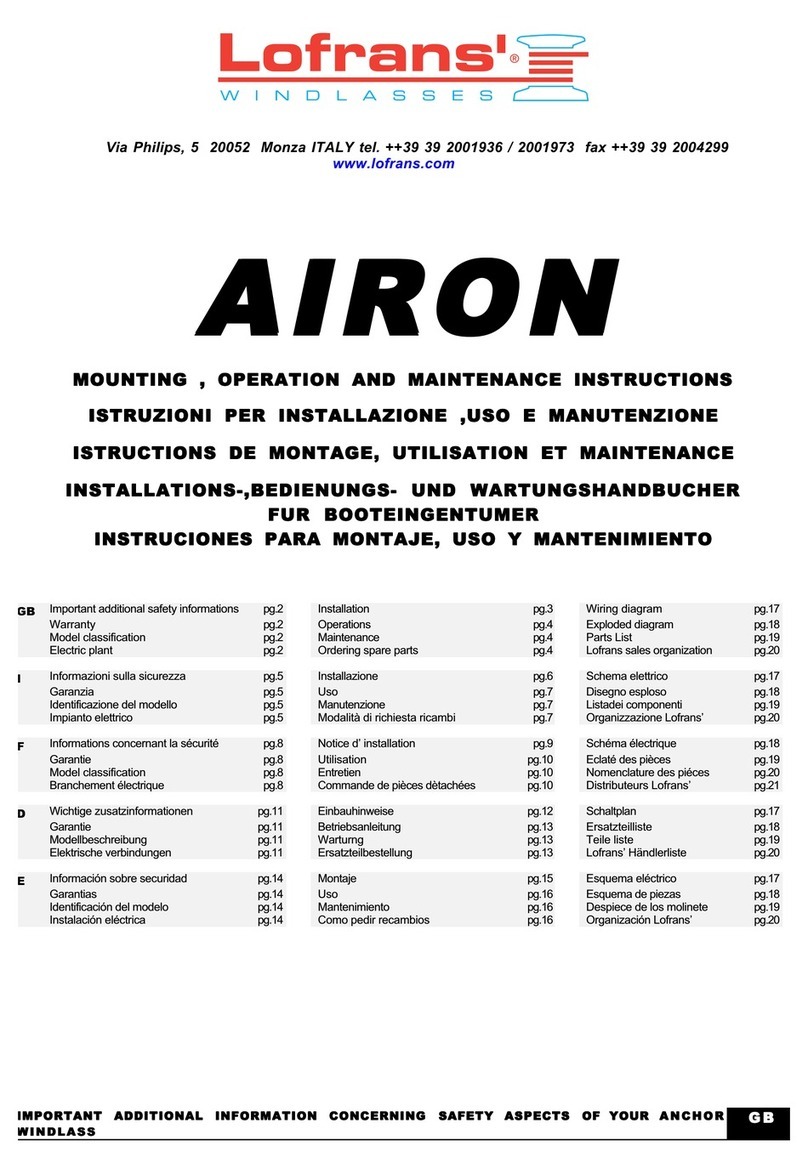
3
www.lofrans.com
UK
DANGER!
A warning such as this indicates the existence of a serious risk that has high probabilities to cause death or a serious accident if
appropriate precautions are not taken.
ATTENTION!
A warning such as this indicates a reference to the application of safety practices, or draws the attention on unsafe behaviours
that might cause personal injuries or damages to the boat.
1.1 Purpose of the manual
This manual will supply information on safety and correct use of the product. Follow these warnings carefully to avoid possible
accidents or damages.
1.2 Assistance
The Lofrans’ products are backed throughout the world by a network of authorised distributors and assistance. In case of need,
please contact your local Lofrans’ distributor. Details on website www.Lofrans’.com
1.3 Receipt and Storage
Upon receipt of the package, verify the integrity of packing. Should it be necessary to store the product for a prolonged period,
keep it in a dry and protected place.
Safety standards and certifying bodies require peremptorily that, during the standing of the anchor, the load must be held by a chain
stopper or a high resistance xing point.
The user is responsible for guaranteeing that during navigation the anchor is properly stowed and xed. This precaution is more important
when the navigation speed is higher and sea conditions are worse. Indeed, an anchor paid out by mistake during navigation can have
very serious effects. Considering its position and not always frequent use, the anchor windlass is particularly exposed to oxidation and
corrosion risk; therefore, it is necessary to arrange a constant inspection of its parts and a due maintenance.
Make sure to have read and understood every part of this manual before proceeding with installation and use. Only persons who know
how to operate should be authorised to use the anchor windlass. Should there be doubts on its installation or use, refer always to a
skilled consultant.
• Anchor windlasses used in an inappropriate way can cause damages to persons and/or things.
• Pay the utmost attention during the use of powerful equipment.
• Even the most careful use can be a source of damages, even serious.
• Lofrans’ products are supplied exclusively for recreational nautical use. Lofrans’ declines all responsibility for improper uses.
• Pay the utmost attention so that arms, legs, ngers, hair, and clothes do not get entangled in the chain or gipsy.
• Before operating the capstans, make sure that there are no persons in water in the vicinity.
• When the capstan is not used, the anchor must always be xed to a solid point in order to avoid damages.
• The anchor windlass must never be used as mooring point. The load from chain and anchor must always be held by a chain stopper
or solid point.
• The drum must not be used for functions other than paying out or weighing the anchor.
• The chain must never be used on the warping drum.
• The system must always be protected by a suitable circuit breaker.
• Disconnect always the circuit through the circuit breaker when the anchor windlass is not in use.
1 INTRODUCTION
2 SAFETY INFORMATION

